My sweet Mocha has now lived with me for 10 months. Is he a happy cat? I researched “happy cat behavior” to see if Mocha fills the description. Try the same with your cat, and discover if his actions are those of a happy cat. Each cat will show different characteristics, though each one might behave as if happy.
To illustrate how these characteristics fit my cat, have used the list found from my research to discover how well Mocha fits as a happy cat. Mocha has his own unique worldview, but it’s pretty easy to see where he belongs on the happy cat scale.
The Universal Signs Of Happiness
A cat will not be purposefully spiteful or mean. However, he does have emotions which might make him feel happy, sad, or angry. Just as with people, no two cats will express these emotions in the same way. Learn what to look for.
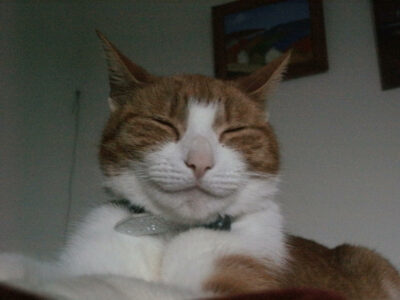
Though cats experience emotions a bit differently than we do, we can find some universal signs that indicate if our cats are happy and healthy. Signs of happiness include happy body language, increased vocalizations, increasing desire to cuddle or play, and normal grooming activity.
Using my cat, Mocha, as an example, I’ll go through a list of many signs of cat happiness and we can see how he fits in the picture. Here goes:
Kitty Conversation
Kitties can “say” they are happy with their vocalization. Sometimes they can engage in long conversations. In general, a higher-pitched sound from the cat demonstrates more happiness than lower-pitched sounds. These may be born out of frustration and may be more demanding.
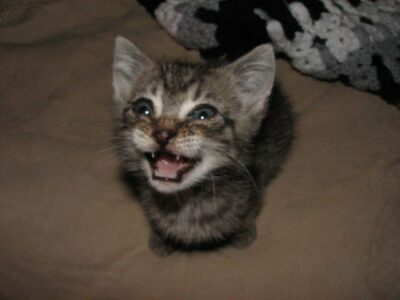
Direct eye contact when meowing is a certain sign of happiness. Sounds of kitty conversation can include, besides meowing, chattering or chirping and trilling.
MOCHA: Mocha is a very vocal cat. He’s at least part Siamese, and that may account for part of it. He speaks with chirps and trills, mostly. The only time he meows coincides with his receiving his food.
He converses a lot, morning, evening, and in between, except when he’s napping or in deep sleep. He seems to enjoy it when I answer him, whether in English or in my version of cat.
Purring
Usually, when a cat makes this wonderful, soothing sound, it signifies happiness. If he spends a lot of time with you, he may purr a lot. Study the circumstances, because sometimes purring has another meaning.
A mother cat purrs when she gives birth. A cat who is stressed or in pain may purr as a way of self-soothing. He might purr because he’s scared. If he’s hiding in the back of your closet and purring, he may have a physical or emotional problem.
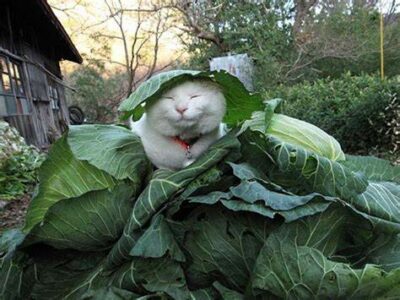
It’s also said that purring occurs at just the right frequency to help heal bones and other wounds. Study the context of the purr. If the cat is enjoying your company or that of other animals, and purrs, he’s expressing happiness.
MOCHA: When Mocha first moved in, I didn’t hear him purr. My first realization that he could purr when he wanted came when I heard him purring softly while eating. Mocha started out in a feral colony of polydactyls in Juneau, and he may have considered it dangerous to purr too loudly.
Who knew what predators might hear him? Now, he’s far less stressed, and his purr comes much more frequently. He purrs when he’s being stroked, or when he’s getting ready to sleep. He still purrs quietly, but he’s a bit louder now.
Kneading (Making Biscuits) Or Drooling
Kneading probably stems from the time of kittenhood when the baby still nursed. When kitty kneads, he’s showing happiness and contentment, just as he did when he still lived with his mother. Often a kneading cat also purrs.
Not all cats drool, but some cats, when cuddled or petted, will do so. When he gets attention, he may drool, but if he’s doing so without any added attention from you, he may have a medical problem. Otherwise, consider it another sign of cat happiness.
MOCHA: Both Mocha and my last cat, Pogo, never “made biscuits” and did not drool. I’m not sure why, as all my other cats engaged at least in the kneading. Carlos used to sleep on the pillow next to mine, and he always kneaded the edge of my pillow when going to sleep.
I’m not sure why Mocha does not knead, but, because of my experience with Pogo, I have learned that not all cats knead — or drool.
Playfulness
Your cat will play with you if he likes you and trusts you. A happy cat likes to play, especially if a younger cat. He will slow down a bit as he ages, but he can still enjoy play-time.
It’s recommended that you play with your kitty a couple of times a day, morning and evening, for about 15 minutes per session. If the cat plays by himself as well, all the better. Make sure he has toys that he enjoys and that keep him active.
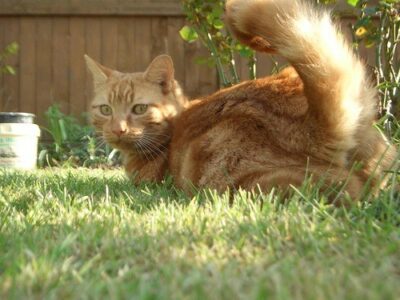
Be assured that playfulness is a great indicator of cat happiness. If your cat plays, whether with wild abandon or in a more sedate fashion, that’s a very good thing. Encourage this playfulness.
MOCHA: My cat certainly aces this exam — he loves to play. He’s more boisterous in the morning, but will still play a bit in the afternoon. Often, when I’m ready to go to bed, he plays under the bed, usually with one of his favorites, a toy kitty spring.
Sometimes he practices his pounce under the bed, which results in bumps to the underside of the box springs when he leaps. Speaking of pouncing, a couple of times he’s practiced his pounce out in the living room.
He’ll position a toy spring in a clear spot on the floor, and then do a mighty pounce, effectively landing on that “prey” and annihilating it. So funny to watch!
He loves chasing his laser light in the morning session, running the length of the living room and the connecting office (once a garage); then he turns and runs back the same way. What’s really amusing: When he starts his run, he’s chasing the light; then he outruns it. Such enthusiasm!
Friendly And Curious
Watch for these signs: Kitty approaches you with his tail high, gives you an affectionate rub, and butts you with his head. These signal a happy cat.
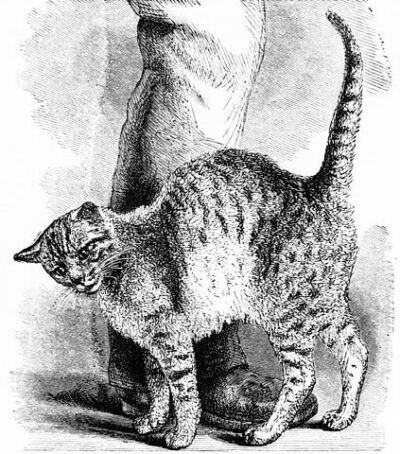
Curiosity and affection toward other cats or humans might vary, just like in people. Kitty may be introverted, or he may be more ready to interact as a social animal. It depends on his personality. A happy and well-socialized cat tends to be less timid than a cat experiencing stress.
Though he may be wary of strangers, he may simply display caution until he decides that the new person poses no threat.

MOCHA: Because of his past history, he shows more caution around strangers than another cat might do. Carlos loved everyone and became my official “host,” always welcoming new people to the house. Mocha will investigate and sometimes show friendship.
At other times, he’s more apt to hide. I’m wondering if some of his reactions may stem from past memories. For example, the man who built his catio has a full, shaggy beard. Possibly he reminds Mocha of someone who mistreated him or frightened him in the past. Mocha hides from him.
Once, when the carpenter headed home, I opened the door to tell him goodbye, and the cat came running from the house and right out the door. I asked the carpenter if he’d pick the cat up, since Mocha ran right for his truck. The man just said, “Hello, Mocha,” and the cat turned around and ran right back inside.
Proper Litter Box Use
A happy, healthy cat will use the litter box properly, and will not leave “presents,” either liquid or solid, elsewhere. If the cat does his bathroom business outside the box, he could do so for a couple of reasons: He’s upset about something in his environment, he’s not feeling well, or the box needs cleaning badly.

He does not utilize this behavior because he is upset with you. Something has created a stressful situation, such as a new family member or other major change in the household. Or, he could have a medical condition as the underlying cause. The vet can find out for you.
MOCHA: Fortunately for both of us, he’s never had a litter box problem. I clean his box a couple of times a day, making sure it’s clean at night and first thing in the morning. He uses it without fail, an indication that he’s happy and has no negative medical condition. I am thankful.
Outdoors Or Indoors?
I have almost always lived in a rural area, and have let my cats outside in the daytime. However, I’m told by many that letting the cat run free puts them in danger in ‘way too many ways. Thus, I’ve come to the realization that many of our cats lead a much safer life if kept inside.
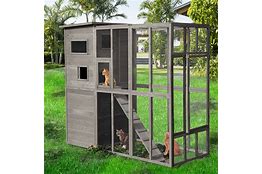
So, what do you do when you have a cat who tries at every chance to escape to the outside world? You have a couple of alternatives: You can go against your better judgment and let kitty out; you can teach him to walk with harness and leash; you can build a catio.
MOCHA: This cat becomes the first cat that I will not let outside. I have a couple of reasons: First, since he started out as a feral, I’m afraid he’ll leave and never come back, either because he finds a situation he likes better, or something will eat him.
Second, birds fascinate him. He’s fast and deadly to small prey, and I am afraid he would do great harm to the local bird population. Therefore, his destiny is kitty prison.
To try to make him happier, I’ve added a catio that can be accessed by Mocha from a cat door built into the office window. It’s not quite finished — we still have to install the cat door — but I’ve opened the window and let him out a couple of times.
He loves it! He doesn’t seem to care how cold it is out there (it was in the teens yesterday, and I had to coax him in with a treat) and he now wants out quite often. When it gets a bit warmer, will leave his cat door open for his use.
Also, will plant cat grass in the spring, which will make the catio floor much more fun for him (right now it’s mostly dirt.) Of course, keeping him out of there until the grass grows will be a challenge, but we can use harness and leash for a while during that period.
Sleeping With You
Sharing your bed with your kitty is a great way to create a closer bond. The warmth and comfort of your bed, plus the “togetherness” of sharing the night-time sleep can make the experience a happy one for both you and kitty.
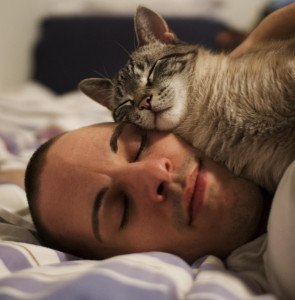
MOCHA: I believe sharing the bed has been one of the best bonding experiences we’ve shared. When Mocha finally decides to settle down for the night, he jumps on the bed and positions himself right behind my knees (I sleep on my side) and goes to sleep.
It’s a good thing I don’t move around a lot at night. We share the bed and the love all night long. I do believe I sleep better because he’s there.
What Do You Think? Do You Have A Happy Cat?
I do hope your kitty has passed the “happy cat test” and adds to your happiness as well. Learn to read his body language to answer questions you might have about his well-being. Give him love and attention and talk to him — maybe he will tell you he’s quite contented.
References I used for this post: pawtracks.com/cats/signs-cat-is-happy/ http://thesprucepets.com/is-your-cat-happy-553923 petmd.com/cat/behavior/is-my-cat-happy rover.com/blog/is-my-cat-happy/

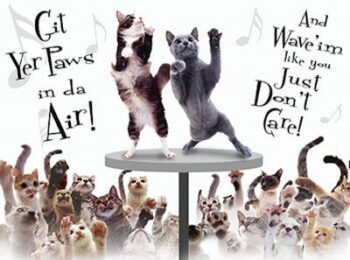
Great article and adding Mocha’s personal habits improves your story more! Currently I have two cats. They have access to the back yard but rarely go out and then for a few brief minutes. Ling-Ling is a 15+ year old feral that finally ‘came inf from the cold’ this past summer after her sibling died. Previously barely able to touch her, now she comes to me frequently for head scratches. Truffie tolerates Ling Ling but no love lost. We have litter pan issues with the former feral but she tries her best with occasional accidents. I do believe both cats are extremely happy and we will continue to provide a loving home for Ling Ling, even as it requires some clean up …(Sigh!!) Thanks for sharing your story.
Oh, thanks, Elaine, for the info about your fur babies. Yes, we do put up with quite a bit because the benefits make it worth while. Glad you liked the article.